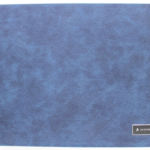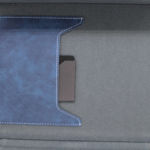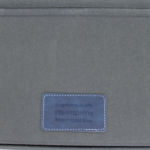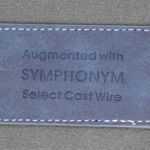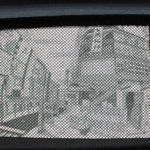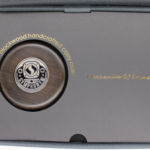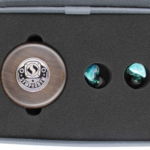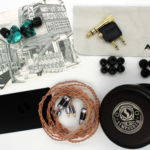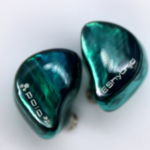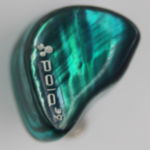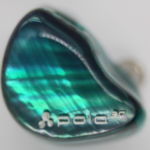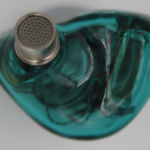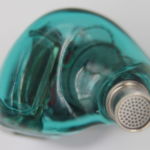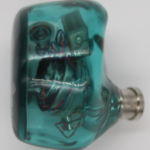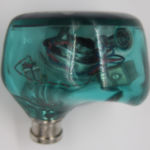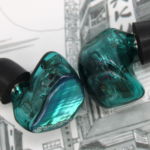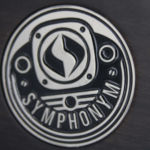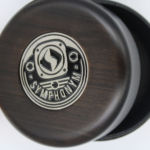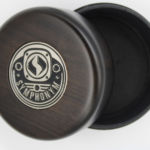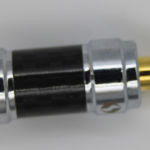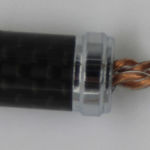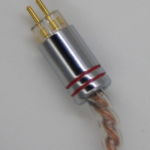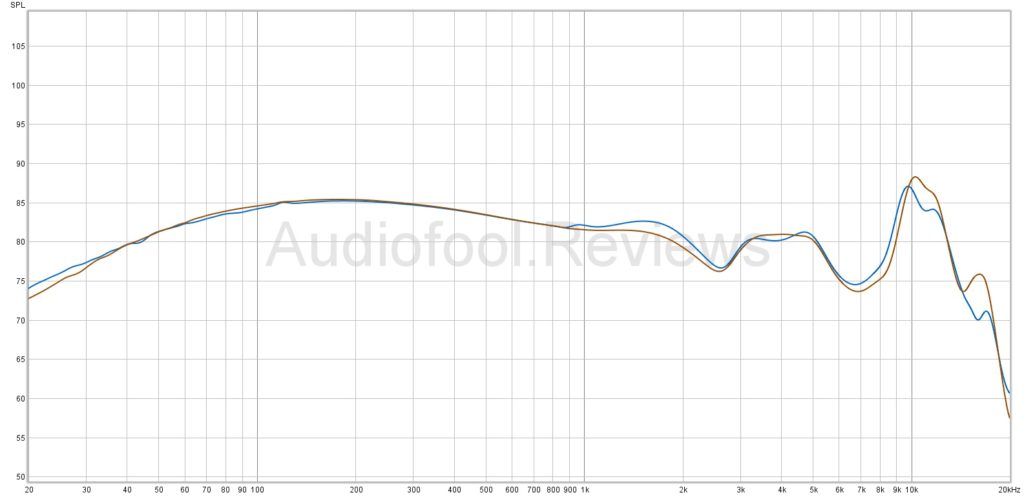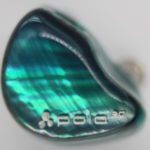Shozy/AAW Pola39
disclaimer: The Pola and Pola 39 were sent to me as part of the review tour by Alan with The Source AV. I have no financial interest in either The Source AV or in Shozy/AAW and both were sent on to the next reviewer at the close of my time with the two iems so I have received no renumeration of any kind for this review. If you have an interest in these, more information can be found on the Shozy/AAW website, or to purchase your own pair, visit The Source AV.
Unboxing / Packaging:
The outer box is typical cardboard, but as soon as opened it gives way to a much more premium experience. The case for the 39 is even more impressive than that of the original with blue leather exterior and grey felt interior with multiple levels separated with dividers to keep components from scratching or moving in the package. Compartments are provided for the paperwork, cable, carry case, earpieces, and accessories. 7 sets of tips, a 3.5 to 6.3 adapter, African blackwood carrying case, airplane adapter, manual and warranty card round out the kit.
Build/Fit:
The Pola39 is a showpiece for sure. Mother of Pearl faceplates inlayed in hand polished clear acrylic makes for a stunning earpiece. Earpieces are fairly thick and sit as much on the ear as in, but are smaller than the previous generation and comfort benefits as a result. Inner shells are transparent with a single vent at the rear of the shell (visible, but not felt). Nozzles are polished steel with a lip for tip retention and exit the lower front with a slight forward rake. Bi-pin connectors are deeply recessed which will limit cable choices (but it comes with a great one) and they are well designed to provide a strong connection that is less likely to bend or break when compared to those mounted on the surface. All seams are extremely well done and are not visible or felt with a fingernail.
I found the 39 to be much more comfortable than the original as the shell is slightly smaller and better shaped for me. Neither is particularly heavy and what little weight is there is well distributed by the earhooks. Those with smaller than average ears may struggle a bit as these are on the large side of medium and are thicker than average as well. With the 39 already being smaller than the previous generation, it is entirely likely that future generations will continue to shrink and those with smaller ears may yet be able to fully enjoy the Pola series.
Case:
The carrying case is one of the coolest I have seen as it mimics the metal mint tin style of other brands but takes it to another level. The body is made of highly figured African blackwood with an inlayed symphonym medallion on the top. The two halves are press fit together tightly enough to have no concerns about them inadvertently falling apart but at the same time doesn’t require excessive force to remove the contents. The one drawback to this case is also a blessing in that the case was made large enough to gently set the earpieces and wrapped cable inside without having to force them in. This results in a case that is too large to fit in a jeans pocket comfortably. Its a shame to hide a case this pretty anyway so maybe best to just keep it on the desk.
Internals:
The Pola39 lists both a 13mm dynamic in the product literature and a 10mm text. I am inclined to believe the 10mm driver is the correct spec as it is an upgrade from the original Pola and its 13mm version. The dual electrostatic drivers from the original are kept the same in this model as well. Nominal impedance is listed as 12Ω with a sensitivity of 101 dB/mW like the original but these are a bit easier to drive than the originals. These scale quite well qualitatively but work well enough with a smartphone or tablet that quantitatively they do not need a high potency source.

Cable:
The provided cable is the same as the previous generation, but in this case no upgrade was needed. It is made by Symphonym and is the Tiberon UP-Occ Copper. For those unfamiliar, UP-Occ stands for Ultra Pure – Ohno Continuous Cast which is a manufacturing process designed to minimize grain boundaries and create as uniform a material as possible. While the casting process does not ensure a perfect conductor, it strives to remove as many obstacles as possible. The Tiberon is a 4 core braid with each core being heavier than average. The cable resists tangling but due to its thickness and rigidity, it does have some memory when stored coiled.
Starting at the south end, the Jack is a Rhodium plated straight 3.5mm with a polished stainless and carbon fiber housing. A short strain relief rests at the cable exit and then the 4 wire braid climbs to the barrel shaped splitter. The splitter matches the jack in both style and size with a polished steel button style chin slider immediately above the splitter. The chin-slider is well done and holds position well once set while still being easy to manipulate when needed. A pair of two wire twists exit the splitter and head north to the pre-formed earhooks and .78mm bi-pin connectors. The connectors are of the recessed variety with a polished metal housing followed by a clear plastic insert that fits down into the recess in the earpieces. The housings have a pair of red or blue rings around them for easy L/R orientation. Pins are gold plated for corrosion resistance as well. The cable retails for $169 by itself and I don’t feel that is disproportional to the quality it provides. That is worth considering in purchase decisions as many other models will require the purchase of an after-market cable at an additional cost.
Sound:
Bass:
Here the change between Pola and 39 is fairly evident. The driver is faster, but tuned a bit higher up so there is a slight push at the 100Hz range and roll-off is a bit earlier with it becoming fairly obvious below about 50Hz. Sub-bass is slightly less present than its predecessor, but the wish for a bit more speed on both attack and decay is granted and as a result what sub-bass is present is more articulate and a bit better textured. Mid-bass is mildly elevated byt stays in good proportion to the rest of the signature and gives the lower instruments that same weight that was so pleasant on the original. The Pola39 certainly won’t make the bassheads thrilled, and maybe not even the movie goer looking for that 20hz rumble when the bombs go off, but for classical music where notes that low are a rarity, the tuning of the 39 does a good job of giving each instrument its voice without stepping on each other or feeling thickened. Kudo’s to Shozy for re-tuning this to match the stat, the speed here is closer to the top end and it feels more coherent as a result.
Mids:
Here I was hoping that the 39 wouldn’t mess with the mids as I felt the Pola did a good job with them, and I was pleased to find very similar mids on the 39. That slight dip in the lower mids of the original Pola is gone with the lower mids now on an even footing with both the mid-bass and upper-mids. The updated driver has retained the detail and texture that made me like the original and with improved speed, I feel may have a slight edge in transients compared to the original as well. Mid-bass bleed is a non-issue and lower mids are on full display with no recess or obstruction. Vocals are slightly forward in the mix, with female vocals being a bit in front of lower voices. The odd issue with vocals being kept center stage is gone with vocals sharing the same expanse as the other instrumentation. Vocal textures are as good as the original with a very natural tonality that makes the 39 near perfect for a cappella or small acoustic ensembles. Upper mids and lower treble are slightly pulled back to prevent any harshness.
Treble:
The lower treble starts out slightly behind the bass and lower-mids, but then climbs to roughly the same level and stays there through most of the true treble region. This is a nice tuning and one I like a bit better compare to the original as it prevents any hint of harshness and is a bit more forgiving of poor recordings. The treble is a bit relaxed and trades that last bit of detail for a smoother presentation which leaves the highhat a bit less crisp than it was on the original, but still realistic if not quite as edgy. Snare rattle is still believable, but again not quite as sharp as its predecessor. Much like the original, the cross-over point with the electrostat seems to be somewhere in the 7kHz range and it contributes most of its energy well above that with a distinct push in the 11-12kHz range. The 39 has a very open and airy top end as a result and shows off above average extension without the fatigue that sometimes accompanies it.
Soundstage / Imaging:
Stage is improved compared to the original with depth and width now being better proportioned and height being good as well. I’d stop short of saying holographic, but very good. I would liken the stage to a medium sized arena as it has enough room to clearly hear echoes but does not feel as large as something like the HD800. Seating the orchestra is straight forward and the well proportioned stage combined with above average instrument separation helps make each instrument very easily identifiable in space. Layering is also quite good and honestly better than I expected from what amounts to a single driver handling most of the load. Imaging is on par with the original as here again I think the last bit of precision is being traded for a bit smoother presentation so while all cues come from the right general position, tracking down exactly the point in space that produced them is a bit more difficult.
Thoughts / Conclusion:
The electrostat and piezo drivers are hot right now, there is no denying that, but few companies have really gotten them right. AAW/Shozy has in the Pola39! I had thought the technology needed another generation or two to really get to the point where it was viable, but the Pola39 has proven me wrong. The driver is capable, some of the people trying to tune them, maybe not so much. The Pola 39 is a great balance between technical and musical and while it doesn’t offer quite the technicality of something like the LegendX or the Elysium, one needs to remember it also doesn’t compete in the same price range. With a retail of closer to $1000, its direct competitors are things like the Meze Rai Penta which it out muscles technically, the UM Merlin, which it out finesses musically, and the Westone w60 and Shure 846 as the old standbys at the price point which it outclasses with better top end extension than either. The Pola39 is out of most people’s budget for sure (including mine), but for those that can afford it, it may well be the best thing available at the 1k USD price point. Yeah, its that good.
-
Bass - 7/107/10
-
Mids - 8/108/10
-
Treble - 7.5/107.5/10
-
Soundstage - 7.5/107.5/10
-
Imaging - 7/107/10
Summary
Pros: gorgeous, balanced, great air at the top without great fatigue to go with it
Cons: cost – really at this price, not much else.


